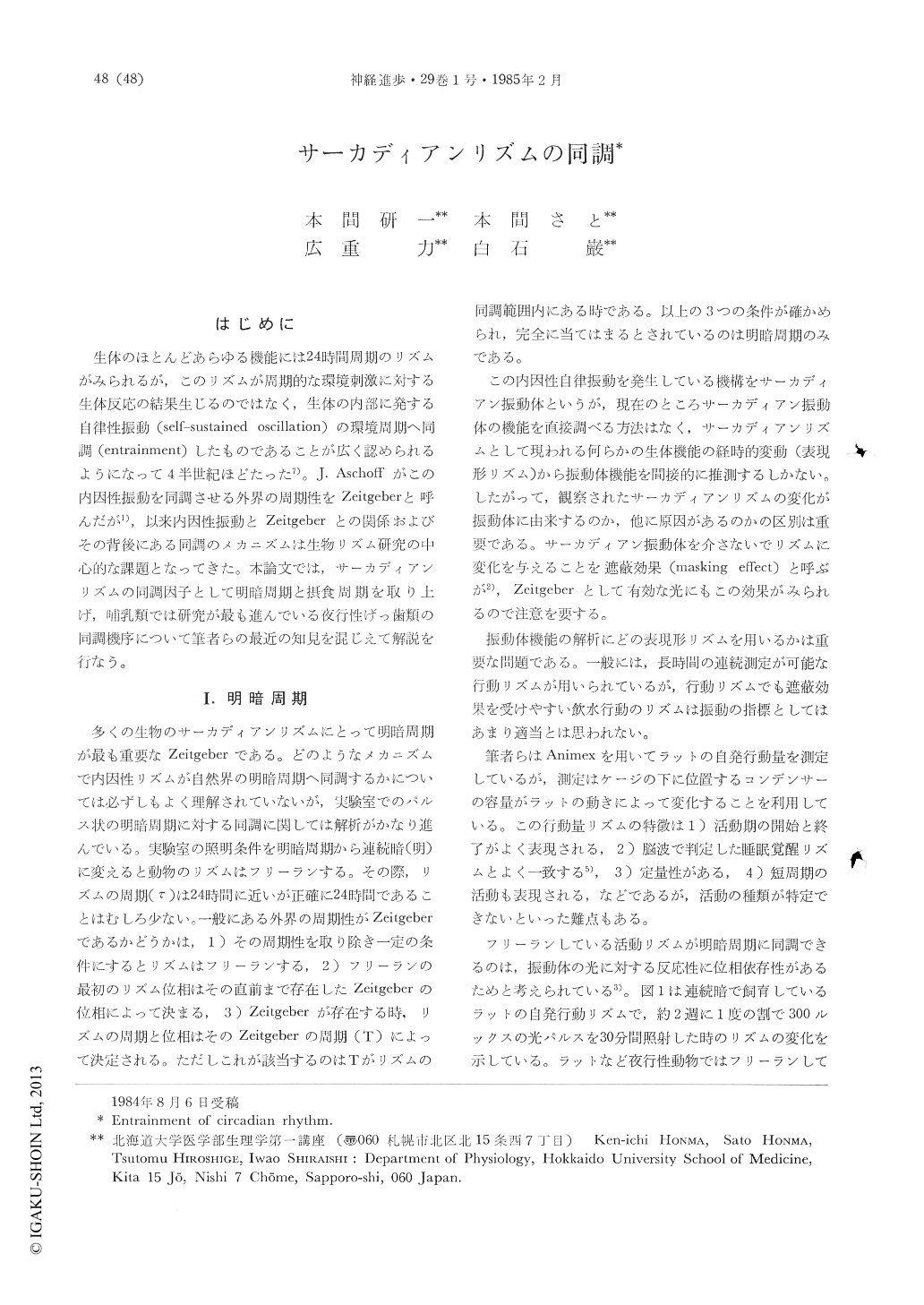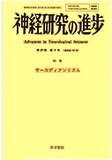Japanese
English
- 有料閲覧
- Abstract 文献概要
- 1ページ目 Look Inside
はじめに
生体のほとんどあらゆる機能には24時間周期のリズムがみられるが,このリズムが周期的な環境刺激に対する生体反応の結果生じるのではなく,生体の内部に発する自律性振動(self-sustained oscillation)の環境周期へ同調(entrainment)したものであることが広く認められるようになって4半世紀ほどたった7)。J. Aschoffがこの内因性振動を同調させる外界の周期性をZeitgeberと呼んだが1),以来内因性振動とZeitgeberとの関係およびその背後にある同調のメカニズムは生物リズム研究の中心的な課題となってきた。本論文では,サーカディアンリズムの同調因子として明暗周期と摂食周期を取り上げ,哺乳類では研究が最も進んでいる夜行性げっ歯類の同調機序について筆者らの最近の知見を混じえて解説を行なう。
Circadian rhythms observed in many physiological functions are not a direct consequence of environmental periodicities but a result of entrainment of an intrinsic self-sustained oscillation to an external cyclicity (Zeitgeber) such as the day-night alternation. In mammals, the light-dark (LD) cycle is the most important, though not exclusive, Zeitgeber, and the entrainment to the LD cycle is primarily based on a periodically changing sensitivity of the circadian pacemaker to light, which can be expressed as response curves.

Copyright © 1985, Igaku-Shoin Ltd. All rights reserved.


